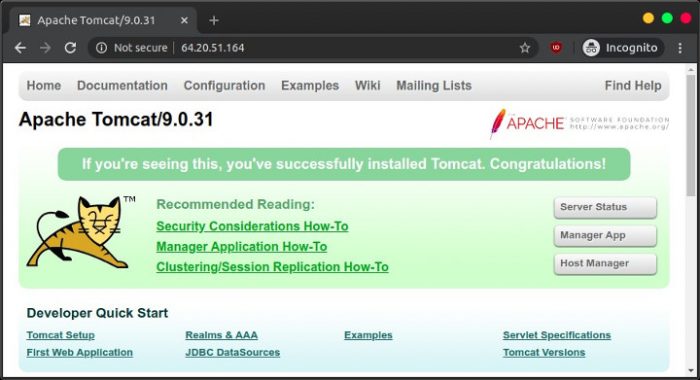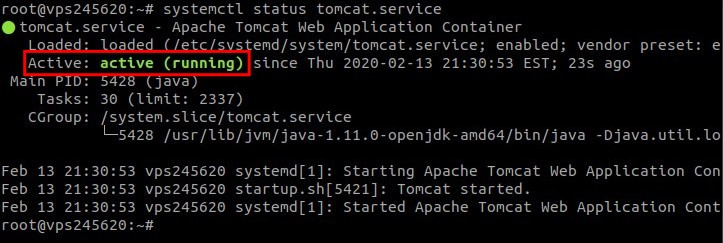

Installing TomcatĪnd now we must install Tomcat on our server. The above command will ensure that no one can login with the user tomcat and sets the default home to /opt/tomcat (where we will be installing Tomcat).

Sudo useradd -s /bin/false -g tomcat -d /opt/tomcat tomcat Next we add the user and add it to the tomcat group we just created.

The first thing to do is create the group with the command: Now we must create both a group and user for Tomcat. Once the install of default-jdk finishes, you can move on to the next step. The second command will pick up quite a lot of dependencies, which you must okay in order for the installation to complete. To do this, open up your terminal window and issue the following commands: The first thing that must be done is the installation of the Java Development Kit.
#Install apache tomcat ubuntu how to#
Mobile malware is on the rise: Know how to protect yourself from a virus or stolen dataĦ easy tips for cleaning up your inbox (TechRepublic Premium) This process is handled completely from the command line, so prepare to type. Simple as that.īut is Tomcat easy to install? Let’s find out.Īs you might expect, I’ll be demonstrating on the Ubuntu Server 16.04 platform. With Tomcat up and running, you can build your Web ARchive (WAR) and drop it into the deploy directory. If you have a need to deploy Java servlets, you will need Tomcat. With Tomcat, you can power large-scale, mission-critical web applications. Jack Wallen walks you through this process on the Ubuntu Server 16.04 platform.Īpache Tomcat is the open source implementation of the Java Servlet, JavaServer Pages, Java Expression Language and Java WebSocket technologies. If you have a need for Java Servlets, you'll probably want to deploy Tomcat. How to install Apache Tomcat on Ubuntu Server 16.04


 0 kommentar(er)
0 kommentar(er)
